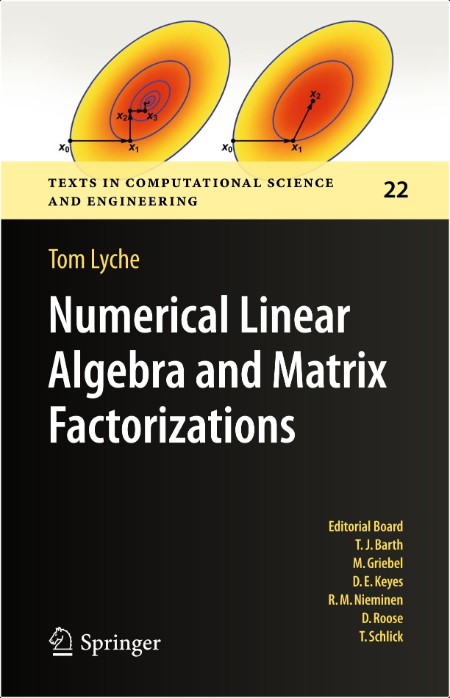
[math-science-tech] Numerical Linear Algebra and Matrix Factorizations by Tom Lyche PDF | 3.9 MB
Title: Introduction to Linear Algebra
Author: Gilbert Strang
Undergraduate mathematics textbooks are not what they used to be, and Gilbert Strang’s superb new edition of Introduction to Linear Algebra is an example of everything that a modern textbook could possibly be, and more.
First, let us consider the book itself. As with his classic Linear Algebra and its Applications (Academic Press) from forty years ago, Strang’s new edition of Introduction to Linear Algebra keeps one eye on the theory, the other on applications, and has thestated goal of "opening linear algebra to the world" (Preface, page x).Aimed at the serious undergraduate student – though not just thoseundergraduates who fill the lecture halls of MIT, Strang’s homeinstitution – the writing is engaging and personal, and the presentation is exceptionally clear and informative (even seasoned instructors maybenefit from Strang’s insights). The first six chapters offer atraditional first course that covers vector algebra and geometry,systems of linear equations, vector spaces and subspaces, orthogonality, determinants, and eigenvalues and eigenvectors. The next three chapters are devoted to the singular value decomposition, lineartransformations, and complex numbers and complex matrices, followed bychapters that address a wide range of contemporary applications andcomputational issues. The book concludes with a brief but cogenttreatment of linear statistical analysis.
I would like to stress that there is arichness to the material that goes beyond most texts at this level.Included are guides to websites and to OpenCourseWare, which I shallcomment upon later in this review. The final page lists "Six GreatTheorems of Linear Algebra." Chapter 7 begins with an informativeaccount of image compression, and would be wonderful material for an undergraduate student to present in a seminar to other students.
Strang’s experience at writing and teachinglinear algebra is apparent in the layout of the typeset. Offset in bluetype are topic-specific headings that indicate what is contained in thecontent of the text to follow. For example, on page 5, after developingmaterial on linear combinations of vectors, we find the heading "TheImportant Questions." On page 149, after studying the null space, thereis a subsection with the heading "Elimination: The Big Picture." Eachsection contains the headings "Review of the Key Ideas," "WorkedExamples," "Problems," and "Challenge Problems." These sections areessential reading for the instructor, not just the student. The WorkedExamples include material such as the Gershgorin Circle Theorem, whilethe Problems and Challenge Problems offer the student a chance to master basic ideas and to think much more mathematically about the conceptsunder study. For example, Problem 29 of Chapter 6 asks for thecomputation of the eigenvalues of three matrices (not just genericmatrices, but matrices with structure and, thus, a chance to learnsomething about how the features of the matrix influence theeigenvalues),while Problem 39 of the same chapter asks for the possible values of the determinants, traces, and eigenvalues of the six 3 X 3permutation matrices. There is nothing here that can be said to be dry,uninteresting, or irrelevant; rarely does an undergraduate mathematicstext feel so alive as this one.
DOWNLOAD:
rapidgator.net/file/56ab1a63f60a73590f8a257a91099fa2/math-science-tech_Numerical_Linear_Algebra_and_Matrix_Factorizations_by_Tom_Lyche_PDF.rar
ddownload.com/53j2as09uvcn/math-science-tech_Numerical_Linear_Algebra_and_Matrix_Factorizations_by_Tom_Lyche_PDF.rar

